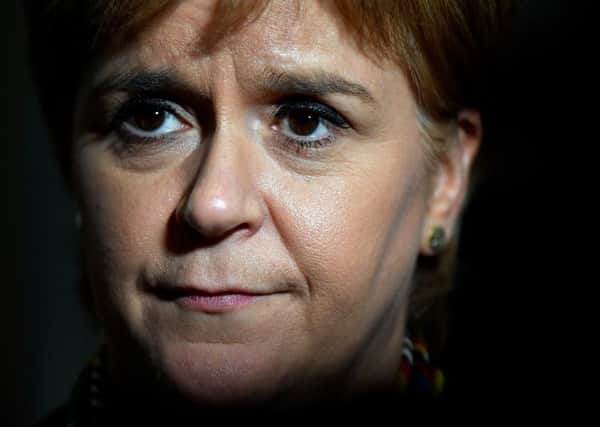SNP's secret plan for bank in independent Scotland


Confidential Scottish Government documents disclose that civil servants worked on a blueprint for a Scottish Monetary Institute (SMI) employing up to 450 staff and costing around £50 million a year to run.
The documents have come to light under Freedom of Information legislation and were prepared ahead of the 2014 independence referendum.
Advertisement
Hide AdAdvertisement
Hide AdLast night SNP sources indicated that the plans would be fed into the SNP’s Growth Commission, headed by former MSP Andrew Wilson which is building the economic case for independence ahead of a second referendum.
Opposition parties claimed the proposal added to the cost of independence and exposed the confusion of the SNP’s economic plans.
In 2014 the SNP campaigned for independence on the basis that Scotland would keep the pound and continue to use the Bank of England as its central bank – a policy that was rejected by the UK government.
But the documents show government officials were also looking at giving the SMI many central bank functions.
Advertisement
Hide AdAdvertisement
Hide AdThese would include day-to-day operation of Scotland’s monetary and financial system under a model similar to the relationship between the European Central Bank and the national central banks in the euro area. The documents added that: “Should Scotland be required to have a separate central bank the functions of the SMI can be expanded to fulfil the requirements.”
The plans suggest that some of the costs of running the institution may have been offset by Scotland receiving a share of the profits from the Bank of England. But such an arrangement would require the co-operation of the UK government. They also revealed that officials were looking at the option of a separate Scottish currency.
The civil service documents revealed a “significant” number of staff would be required for independence negotiations and estimated a total wage bill of £16 million for the “transition” period required to set up the SMI. Total running costs for the first year would be £49.7m including staff costs of £24m.
The civil servants responsible for drawing up the documents pinpointed the Bank of England, HM Treasury and academia as areas from where staff could be recruited as well as experts from international organisations.
Advertisement
Hide AdAdvertisement
Hide AdThe documents estimated that £60m per year could be spent on consultancy costs in the first 18 months after an independence vote.
If the UK government kept to its pledge not to co-operate with Alex Salmond’s plans to share the pound and a central bank, the documents warn costs would escalate.
“If no agreement is reached with the UK government and the Bank of England does not undertake a large number of central banking functions on behalf of the SMI, then the remit of the SMI would need to be significantly expanded and the number of staff required would be considerably larger” it said.
When it came to SMI receiving a share of Bank of England cash, the documents made a “working assumption” that as part of a formal monetary union Scotland would get a share of the profits.
Advertisement
Hide AdAdvertisement
Hide AdIt states that Scotland’s Bank of England income based on a population share of 8.4 per cent in 2012-13 would have come to £48m.
However, it was also acknowledged that the amount received would be subject to negotiation and could amount to nothing.
Murdo Fraser, the Tory finance spokesman, claimed the plans were a “hammer blow” to independence.
Mr Fraser said: “It’s no wonder that the SNP haven’t brought these figures to light before now, as they detail the huge cost an independent Scotland would face in setting up its own monetary institute. Consultancy costs alone would be in the tens of millions.”
Advertisement
Hide AdAdvertisement
Hide AdA Scottish Labour spokesman said: “The fact that the Nationalists didn’t publish this information at the time just shows how little credibility even they thought their currency plans had.”
A Scottish Government spokesman said: “This material shows the thoroughness with which Scottish Government officials prepared for an independent Scotland ahead of the 2014 referendum.”
